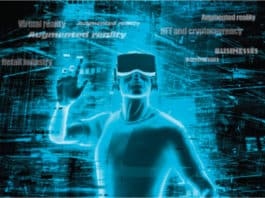Over the last few years, the concept of openness has been spreading its wings far and wide in many guises. Much of it started with the popularity of the FOSS (free and open source software) movement. Though dating back to Richard M. Stallman’s days at MIT, it gathered popularity only on the arrival of the Linux kernel from Linus Torvalds in the early 90s. Since then, the movement has never looked back.
Almost every large corporation is involved in the movement in one way or another, with IBM, Sun, Intel, HP, etc, leading the way. The movement has got into the legislative bodies of many countries, creating pressure at the level of policies, guidelines, etc, to support and adopt FOSS wherever possible. Many countries have taken explicit steps to nurture a FOSS ecosystem, by training programs, certifications, resource centres, and so on.
Today, FOSS is a familiar term across the world, spanning academia, industry, government, and SMEs. The FOSS activities have a number of dimensions, stretching well beyond the availability of software with source code. It has led to sibling movements in content, standards, hardware, systems, etc. Each of these has attained a fair degree of maturity today.
Academia has always related to FOSS’s way of thought quite easily, thanks to the same underlying philosophy. However, there have been pressures from the proprietary software world, often derailing the curriculum in many cases, and disrupting the balance between conceptual foundations and commercial aspects. An example is the issue of a vendor-neutral syllabus in India, which has been in the air for a long time.
Here, we look at the role the various ‘open movements’—a term to denote the set of movements consisting of free and open source software, open standards, open content, open hardware, etc—can play in academia and how academia should use this effectively to nurture these movements in return, for a win-win relationship.
We will first discuss the basic driving force of a common mindset, and the associated implications. Then we look at specific aspects such as content, standards, software/hardware, etc. Though licensing is a major issue in this regard, we will ignore the licence discussion in this article, it being more appropriate for someone with a legal background to talk about.
Philosophical match
Academia is about sharing knowledge—to enrich the giver and the receiver. One builds on the knowledge created by others, and shares the enriched knowledge with others to let it grow further. In a broad sense, software and content can be seen as embodiments of knowledge, differing, perhaps, in the way the knowledge is captured and represented. And hence, the notion that software needs to be available with the full source code is something natural to the academic community.
It was the commercial companies that introduced the concept of hiding the source behind a compilation process, to ‘protect’ what they call as their ‘intellectual property’, in turn to ensure that copies (and even more so, any modifications) are not done by the customers. The matching mindsets have many implications for both academia and the open movement.
The popularity of open source is the highest in academia. The pricing issue is certainly a major factor here, since academia often has the severest budget constraints in acquiring resources such as software and equipment. The ability for academia to understand the philosophy behind the open movement, in the sense of sharing knowledge freely, also plays a major role. Their contribution in pushing the quality and quantity of open source higher has been significant. Researchers, even earlier, used to contribute the software developed for their research work, often in cutting areas of development, to public use. The Moodle learning management system, Latex document processing system, etc, are good examples of high-quality systems coming out this way.
Another implication of this link is the growth of open standards. FOSS is strongly based on the community metaphor of the bazaar development model described by Eric S. Raymond (ESR), which brings together a number of people from around the world to work on a common system. The roles for each are open, and how much they contribute to the final system is also open. There are only internal deadlines set by oneself.
This necessarily demands explicit efforts to reduce the learning curve for others, and transparency in shared data structures. Open standards, where the complete description is freely accessible to everyone, and where the standards evolve from collective contributions, becomes a natural choice. Not surprisingly, most of the open source programs use open standards wherever available. Here, formats and conventions invented for one system are reused for another, if relevant.
This brings us to the idea of building on what is existing—another typically academic mindset. As Newton remarked, “If I have seen farther, it is by standing on the shoulders of giants.” Research literature that builds on earlier results and acknowledges them by citation, and new software programs that reuse and extend existing software programs are clearly echoing the same mindset.
Starting from scratch every time, does not take you very far, in trying out new ideas in an already rich landscape. Starting from something that provides a close approximation to what you are looking for, and extending it, as appropriate, is more productive. As ESR has remarked: “A good programmer knows what code to write; a great programmer knows what to rewrite.” This kind of reuse and extension necessitates the openness associated with the open movements. In fact, all these characteristics are fundamental to the growth and sustenance of open movements. And the outcome of these movements, in turn, contributes substantially to the growth and effectiveness of academia.
Open content
The last few years have seen tremendous growth in open content, where the content is declared free for use, just as was done for FOSS. Comparable to FOSS licences like GPL, LGPL, etc, a group of licences also evolved to provide legal sanctity to this move. These are known as Creative Commons and offer a family of licences embodying the core idea of openness, and providing options for permission to modify, retaining attribution, and so on.
Perhaps, the most classic example of open content today is Wikipedia, which takes the openness to the extreme, allowing anyone with an account (that can be freely obtained) to modify any of the pages. However, the quality of the content on Wikipedia is generally very good, and some formal studies have also shown this empirically. Although there are topics involving strong controversies, where one often sees a series of continuous modifications by the opposing sides to support their stand.
For most academic content, the Wikipedia offers excellent reference/learning material with additional links, images, and so on. Lacking even a core group to filter modifications as is done with open source software, the high-quality of content indeed shows the feasibility of the approach.
The EU-funded SELF project exploits such resources, to even form course material for university courses, dynamically. Other examples of open content are the ‘million books’ of Project Gutenberg, the audio book collection at Librivox, the number of video repositories of Google video, YouTube, and so on. The movement got its momentum from the MIT initiative of open course ware, which has, in turn, led to a wider initiative of the open knowledge initiative (OKI) involving a number of partner institutions to share such resources. It may be noted that these different set-ups follow different norms as far as their policy of use and modifications are concerned.
A lot of open source software documentation and learning material are also available in such free content. These include, machine learning with Weka (full book available online), O’Reilly publications, NL Toolkit (full book on this available, along with the tool kit), the Linux Documentation Project, and so on.
FOSS for education
It is in the area of software resources that the open movement has contributed most to the education sector. The software relevance to education is from three different angles, and these are described briefly in the following sub-sections.
FOSS learning resources
E-learning is another buzzword that is popular among all academic communities, though its meaning and adoption varies widely from group to group. One major concern in e-learning is the quality of content. Traditional content has been largely text and static pictures/images, limited by the medium of textbooks. Much of e-learning content is still restricted to these two.
Animations, simulations and interactive problem solving environments (IPSE) can significantly enhance the teaching learning process. It provides an opportunity to use the multiple senses in absorbing a concept, and also to try out the concept in perhaps restricted environments, through simulation and IPSEs.
These are generally hard to develop, as they involve a significant amount of software development for each topic. The system needs to have a fairly sophisticated model of the content relating to the domain, and be able to recognise and react to the events with respect to the domain. For example, a program illustrating the concept of projectile motion needs to be able to compute the path of the projectile based on relevant parameters—the initial velocity, the angle of throw and gravity. As these parameters are varied by the student, the system needs to revise the computation accordingly. These tools make e-learning much richer than what is possible in a traditional environment, and ought to be part of e-learning.
One reason for the ineffectiveness of e-learning in academic settings is the lack of such quality content, which would deepen the learning and encourage students to use these. A lot of high-quality programs of this type are available in open source over the Web. Unfortunately, there are no reliable comprehensive repositories for these kinds of programs, as they are scattered efforts from people around the globe.
The UNESCO portal for FOSS, and repositories like the Edubuntu package list, provide some starting places. The OSCAR project of IIT-B also makes an attempt to collect animation programs. IPSEs are not included here, since these are often fairly large programs. Table 1 provides a (very small) sample of resources one can find on the Web.
| Some FOSS educational software | |
| Application | Purpose |
| Euler | Complex numbers and matrices |
| Kstars | Astronomy with over 1.3 lakh stars, all planets, etc |
| Chemlab | Chemistry lab |
| Sage | Algebra, geometry, etc |
| Units | Unit conversion |
| Earth3D | Real-time 3D view of earth |
| Kalzium | Periodic table and properties of elements |
| Atomix | Puzzle game for physics |
| Kig | High-precision geometric constructions |
| Xaos | Fractal geometry |
One major challenge in using these resources for education is the need to link them explicitly into the curriculum. Except the highly-motivated students, most would be lost when exposed to these tools as a collection for them to explore on their own. For the purposeful use of these systems, activities assignments, experiments, etc, need to be formulated, using these tools.
FOSS for basic utilities
This is what’s most obvious to people. Today, open source solutions of good quality are available for you to set up a basic computer system, without investing in any proprietary software. All the software components, including the basic operating system, office suite (for documents, presentation, drawing, equations, etc), browser, media players/editors, drawing utilities, network management, and so on, are available in open source today. In most of these cases, one also has a decent number of alternatives to choose from. Table 2 includes some of these tools. Installation and management of these are no more difficult than alternative proprietary solutions. FOSS-based desktops are seen to be generally less vulnerable to security problems such as virus infections; this is a major headache for systems administrators in educational establishments, in general.
| Various FOSS applications by category | |
| Application category | FOSS applications available |
| Web browser | Firefox, Iceweasel, Konqueror, Epiphany |
| Document creation | OpenOffice.org, KOffice, Latex |
| Audio record/edit | Audacity, Ardour |
| Web page creation | Bluefish, Quanta Plus, Nvu |
| Content management | Drupal, Jhoomla, WordPress, Plone/Zope |
| Learning management | Moodle, Sakai, Atutor |
| School administration | Schooltool |
| Visual programming | Scratch |
| Diagram editing | Dia |
| Scanner | Xsane |
| 3D animation | Blender |
| Image editing | The GIMP, Krita |
| Page layout program | Scribus |
| Plotting | Kmplot |
| Creating and running tests | Keduca |
| Video conferencing | Dimdim, Vmukti, Ekiga, OpenMeetings |
| Library management | Koha, Dspace |
Full systems customised for the educational sector are also available from some of the popular distributions. Examples are Edubuntu from Ubuntu, Eduknoppix from Knoppix and the proposed EduBoss from BOSS. These include the basic operating system and associated utilities, select tools for educational use (like an equation editor), and some learner resources for specific subjects. This removes the effort of having to pick the relevant packages from various repositories and integrating them individually.
FOSS for learning management
Under this category, I include software that is specifically for the educational environments. There are software solutions for school/college administration, for faculty to run and coordinate the various activities in a course, for faculty to create and manage content for a course, for students to track the progress and collaborate with other students, and so on. Accordingly, here too, the scope of software is vast, and FOSS doesn’t disappoint us. Table 2 has a small list of some of these tools.
One can see a wide range of systems, from learning management and school administration, to library management. Mostly, the systems listed are quite popular, with a good development and user community, and the software are quite stable and feature rich. Systems like Moodle have a large national and international user base. Many of these are also available in multiple Indian and international languages.
Future outlook
We can see that there is a strong synergy between the open movements and academic education. There is a lot that open movements are bringing and can further bring to academic programmes. We need to encourage our academia to benefit from this and also contribute back to help the growth of the movements, in return. Our own projects, students’ projects, as well as PhD/MS projects can benefit tremendously from the existing resources, and can be used to drive new developments and significant enhancements. This needs to happen on a larger scale.
At the same time, there are new challenges coming up on the education side. Content sharing across institutions has happened relatively less often, so far. But with the growth of e-content and the increasing presence of institutions on the Web, this is bound to occur more frequently. Inter-institutional collaboration in sharing not only content, but full courses, subjects and faculty is certainly possible soon. This will necessitate a lot of changes in the software requirements, and offers good opportunities for us to contribute and also adapt existing software to meet these new requirements. New demands will also be made on interoperability as records and resources move across institutional boundaries. Initiatives such as OKI are a step in that direction. Work on distributed learning management systems also looks at similar concerns.
The sharing, in turn, also brings into focus the growing concern of plagiarism. With a vast collection of resources freely available, the chances of plagiarism and the difficulty in detecting it, is increasing. Scigen is a relevant case study, which produces ‘scientific’ research papers using some natural language processing techniques. Since the language appears to be of good quality, rich with a high degree of relevant jargon and following the style and conventions of a research paper, it appears genuine, and outputs from this program have been accepted in some international conferences. Tracking copied (with and without distortion) submissions for assignments to research papers is a major challenge in the academic environment.
There are also changes at the libraries. Good quality open source solutions are available to handle the functionalities of today’s libraries. Even digital libraries are well supported by FOSS solutions such as Dspace. However, with the growth of e-content rich with simulations, and e-learning growing in popularity, the nature of resources that the library needs to deal with is changing. Dealing with IPSEs offers different challenges compared to conventional or even digital books. Already, issues of subscription management and sharing of e-resources is a major concern.
We also need to look at removing the linguistic and physical barriers preventing people from using technology. Software localisation and accessibility are two fields related to these two aspects, which need to see a lot more activity, for countries like India.
In summary, FOSS has enriched the education field in many ways. But the world is moving fast in the education sector as well as other sectors, and new demands and opportunities are constantly emerging on the horizon. FOSS needs to be sustained and nurtured through a sustained cycle of human resources and efforts, to help it continue what it has been able to do so far.
References
- IOSN: Good introductory material on open source, open standards, FOSS and education
- UNESCO portal on FOSS offering a list of open source resources as content and general software of use in education
- The Cathedral and the Bazaar by Eric S. Raymond contains information on FOSS philosophy, development insights, etc.]



